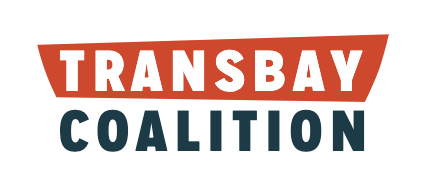
As the vanguard of VTA’s Fast Transit program, the City of San Jose is moving forward with “public service lanes” through the En Movimiento East San Jose Multimodal Transportation Improvement Plan. The plan centers around the urban villages on Santa Clara Street near the planned Little Portugal BART station. Santa Clara Street is considered the main transit backbone in San Jose, having the most bus traffic of any street in Santa Clara County. On February 2nd, 2021, the San Jose City Council unanimously voted to adopt the full plan. However, the city is holding off on implementing public service lanes as part of this plan until planning is complete for the rest of Santa Clara Street westward past San Jose State and through downtown. It’s important that the city receives more feedback asking for faster transit on all other segments of Santa Clara Street that have not yet been planned. You can provide feedback and call for faster transit service on Santa Clara Street and in downtown on this survey.
More Details about the Public Service Lanes and En Movimiento Plan

The plan outlines “public service lanes” on East Santa Clara Street between 17th and 34th streets. Public service lanes are lanes that are only open to public service vehicles, which include buses and emergency vehicles but exclude private auto traffic. In effect, this provides buses with their own lane most of the time. According to city staff, the public service lanes are side-running in order to allow both local and rapid routes to use the lanes, and to reduce the impacts of implementation for the businesses on the street. Staff mentioned that Santa Clara Street is the busiest bus corridor in Santa Clara County, meaning that public service lanes would be especially impactful on the corridor.

The plan also calls for bicycle and pedestrian improvements, including direct, low-stress east-west connections in the neighborhood. In addition to planning for bike lanes and pedestrian improvements, the plan ambitiously calls for transit signal priority on Santa Clara Street. Transit signal priority was included based on community feedback reporting that one of the largest barriers to using transit was slow speed. Both the public service lanes and transit signal priority would greatly speed up bus service on the corridor.
Importantly, in addition to hiring traditional urban planning consultants, the city also hired two community based organizations, SOMOS Mayfair and Vivo (Vietnamese Voluntary Foundation), to help conduct outreach. CBO outreach has now become standard in San Jose’s planning process, and has helped the city gain more community buy-in for bus rapid transit projects.
San Jose’s public service lanes initiative shows that hope is not dead for dedicated bus lanes in Santa Clara County, after the long and minimally successful VTA effort for bus rapid transit in the 2010s. Back in 2018, headlines such as “Plan for Dedicated El Camino Bus Lanes Fizzles Out” announced VTA’s surrender following years of opposition by local governments and $10.5 million dollars spent on studies. Of its three envisioned BRT corridors, VTA managed to construct only one: a 7-mile corridor connecting, among other destinations, Alum Rock and Eastridge Stations in San Jose. This project implemented a few BRT features, such as enhanced bus shelters and real time arrival information, but did not implement dedicated bus lanes.
After experiencing local backlash to its cross-jurisdictional BRT initiatives, VTA engaged on an intentionally smaller scale, but still impactful, bus speed up program called Fast Transit. Fast Transit depends on closer partnership with cities and residents. See this blog post for an overview of improvements being considered. The latest update on incremental progress can be found in Agenda #9, pdf page 108, here. In the short term, VTA is looking to implement transit signal priority on light rail routes and some of its frequent networks (it already has TSP on most of the intersections along the 522 route), with an aim of reducing travel time by 6-8% per intersection.
Taken together, VTA Fast Transit and San Jose public service lanes are a hopeful development for faster transit in Santa Clara County. However, much more work and advocacy is needed before paint gets on the ground, and before other bus speed-up improvements are adopted throughout Santa Clara County.
If you are interested in getting involved in bringing faster transit to your city and the bus corridors you use, please sign this petition and we will follow up with opportunities to get engaged.
